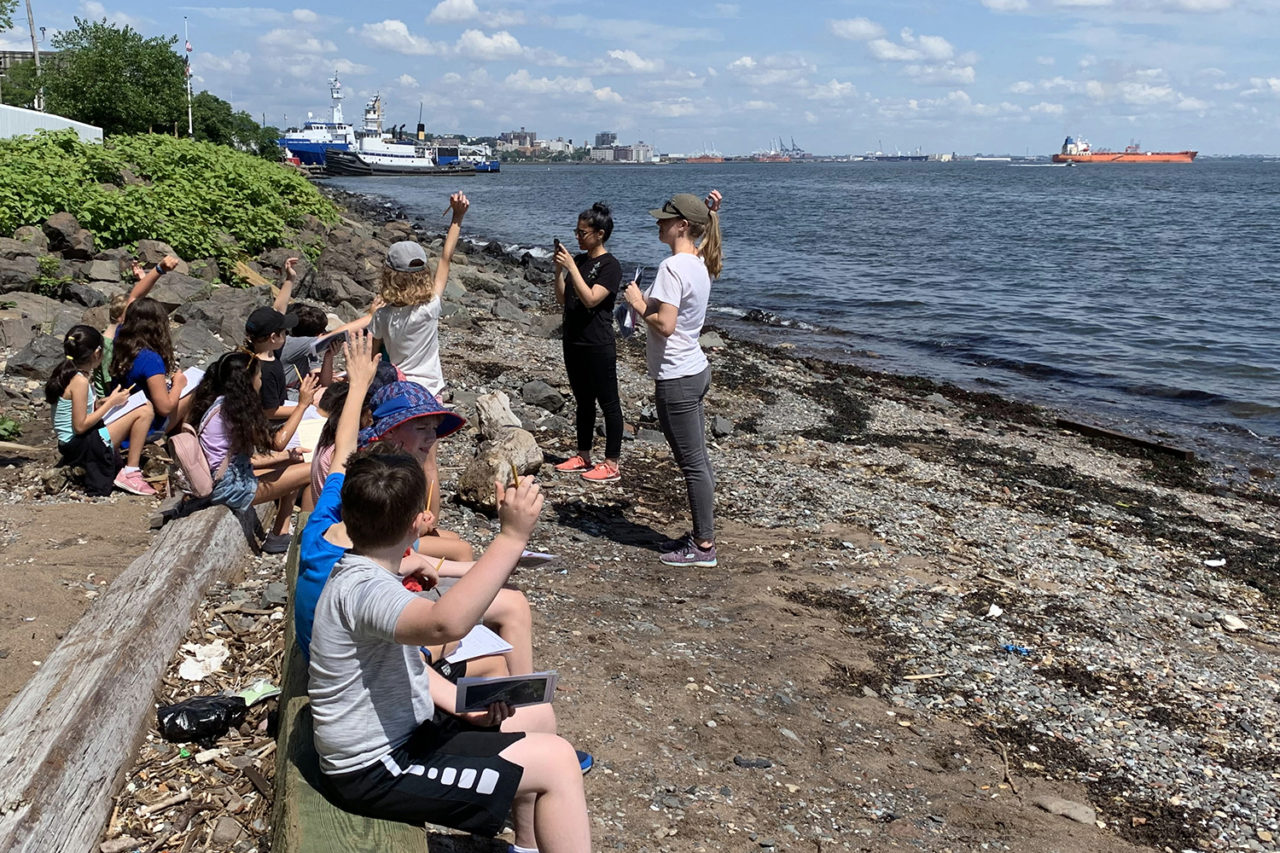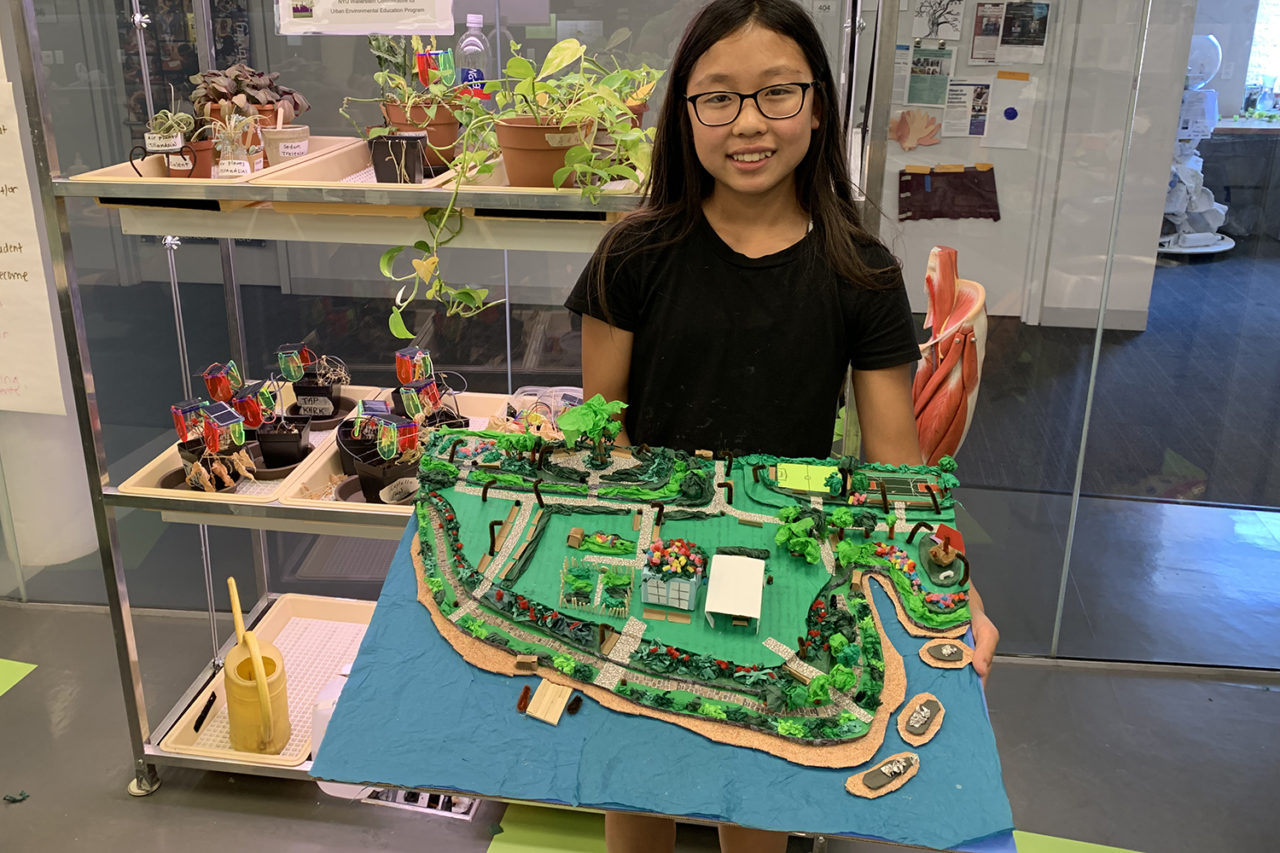by Dustin Atlas
This summer, as part of our expanded summer program offerings, the Center for Architecture partnered with the Wallerstein Collaborative for Urban Environmental Education and Sustainability at NYU to design and facilitate two weeks of multidisciplinary programming for elementary and middle school students.
Center for Architecture School Programs Manager Dustin Atlas and NYU Masters Candidate Christina Edsall co-taught the design studios, which asked participants to question how waterfront parks can better serve communities with smart design, green initiatives, and educational opportunities. Through precedent studies, site visits, water-quality testing, and modeling demonstrations, students learned about landscape architecture strategies and the ecological needs of an urban, waterfront park.
To synthesize this new information, each student was challenged to create a scale model reimagining Heritage Park, which is currently being redesigned in Staten Island. Student proposals included topography to respond to climate change and rising sea levels, oyster reefs to help filter the water, stewardship activities for the public to engage in dynamic learning opportunities, berms to block noisy surroundings, and gardens to help encourage native plants and pollinators.
At the end of each week, students presented their ideas to parents and community members. During the presentation, one student shared that this studio helped her to think about solutions to problems that she didn’t even know existed, “like when parks can use permeable materials to make sure rainwater doesn’t add to the combined sewer overflow.”
Tania Goicoechea, Program Manager for the Wallerstein Collaborative, stated, “The NYU Wallerstein Collaborative promotes environmental literacy through place-based, experiential learning in urban settings. This program was a wonderful opportunity to merge our environmental stewardship initiatives with the Center for Architecture’s expertise in design and urban planning. By giving the students the opportunity and the ability to redesign an existing park, they were able to engage with the space, the community, and the nature in and around it in a genuine way. We hope to continue this partnership in the future to keep bringing real-world, interdisciplinary programs to urban youth.”
This summer, the Center for Architecture worked with over 380 students to investigate topics about architecture and the built environment. To learn more about the K-12 Education Department at the Center for Architecture, please visit our webpage at www.centerforarchitecture.org/k12.






